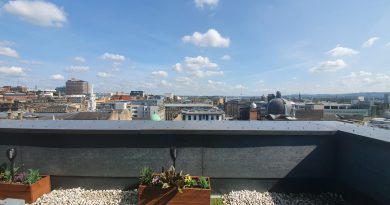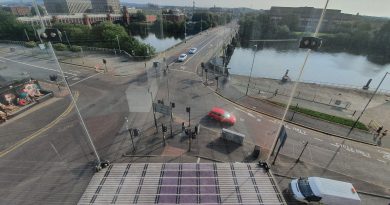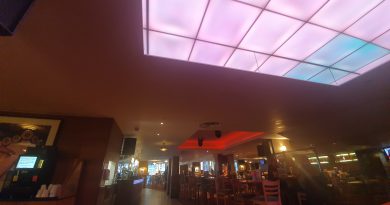Glasgow – Hunterian Museum
The Hunterian Museum is located within the grounds of the University of Glasgow, named after William Hunter who bequeathed the initial collections and also money to put towards its construction.
At the moment it’s recommended to pre-book tickets, which I had done, ready for the 10:00 opening time (although I turned up a couple of minutes late as I got slightly muddled up with finding the museum). There was a friendly welcome and a one-way system was in place that actually made sense, although it was mostly ignored by visitors.
This is the display relating to the Antonine Wall, which was a turf bank to the north of Hadrian’s Wall which was abandoned only eight years after it was constructed. That doesn’t sound ideal after all of the effort made in constructing it, but the natives were quite fierce at the time. There are numerous original Roman distance markers and stone inscriptions amongst the collections, some of which had been buried by the Romans as they departed the area.
The main hall, with a whole Smörgåsbord of different exhibits, with the museum having a deliberately wide scope of subjects covered. The medical section was the one I found most interesting, but I liked the variety of items on display.
This is an important exhibit to the university, the Blackstone Chair. Between 1451 until the middle of the nineteenth century, every student was examined orally whilst seated on the Black Stone. It’s a big lump of dolerite that they turned into a chair in 1776 to make things look a little more decadent. At the top of the whole apparatus of examination is a time-glass surrounded in bay leaves and it lasts for twenty minutes, which is the length of the examination ordeal. It is still usually occasionally, primarily in honorary graduations and for the Cowan Medal examination in classics.
This is a thylacine, or a Tasmanian Tiger, a marsupial which became extinct in the 1930s. It had originally lived in Australia, but in modern times had only survived in Tasmania. The museum holds some inner organs of the animal as well, all that now remains of this rather remarkable creature. There are occasional sightings of the animal claimed, but nothing has ever been verified and it’s unlikely that they’ve survived. There are though some videos of the animal in zoos, with the attempted conservation efforts coming just too late.
A photograph of the museum being constructed.
And the rather cluttered way that Victorians insisted on filling their museums, this is an early photo of the main hall.
Time will tell if I ever get round to it, but there were numerous exhibits that I thought justified their own post, so there might be more to come….. Anyway, this was a lovely little museum and it’s well worth a meander to go and see. There’s also an art gallery at the Hunterian, which I’m visiting as well, but the zoological museum here is currently closed, so I won’t be visiting that…..












